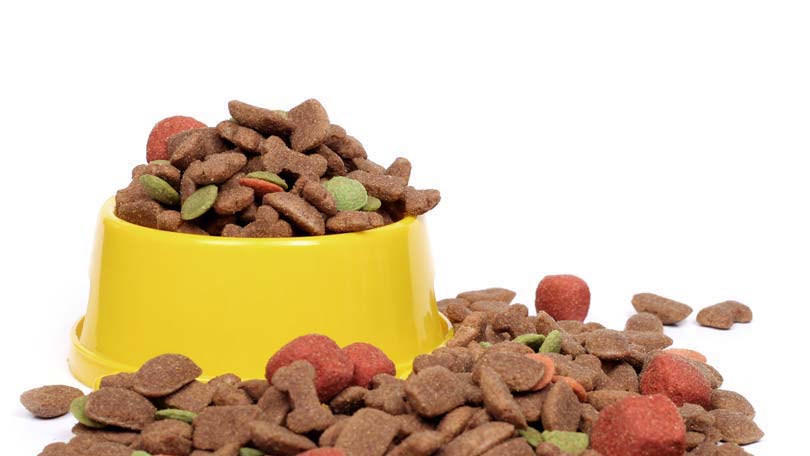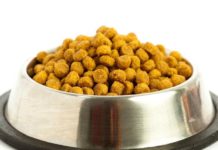
Part of the decision making process when deciding on a breed of dog or adopting a dog from a shelter is how much the pup will cost you each month for the basics – food, housing, vet bills, toys, leash, collar, obedience classes, etc. Over the lifespan of a healthy, happy dog, the biggest expense will be keeping the dog in kibble. There are ways of keeping that expense down however that all new dog owners must be aware of when planning their doggy budget.
The first year
The most expensive year of a dog’s life is the first year. There is the cost of purchasing the pup, buying all the puppy paraphernalia, puppy classes, puppy ‘fixing’, puppy ‘shots’ and puppy food. What may seem like the best way to save a few bucks is to buy a cheaper puppy food however, this is bound to backfire.
There are many levels of quality when it comes to dog food and honestly, you get what you pay for with both commercial and homemade dog food. There is not a large profit margin on dog food and inexpensive food is made from inexpensive ingredients. Raising a puppy on substandard quality kibble is like raising a child on MacDonald’s – it might cost less but the damage caused to that child’s health is not worth the pennies saved. Remember, you get what you pay for and if you want a healthy, happy puppy, you need to feed that puppy the right fuel for a growing body!
The bigger the dog, the higher the cost
This is just common sense for the most part – a Chihuahua eats less then a Great Pyrenees. In fact, the amount of food consumed by a Great Pyrenees is about the equivalent of two to two and a half Chihuahuas a day. This is not surprising information. What is surprising is how many people do not think of the costs associated with feeding their Great Pyrenees puppy when they pick it up from their breeder! Big dogs, high-energy dogs and working dogs all require a lot of calories and that means a lot of high-quality food.
To save a few bucks down the road – feed your Great Pyrenees puppy large breed puppy food and at a year old, gradually switch him to the adult version. Large breed food is formulated for slow growth and joint health – important considerations when you share your home with a large or giant breed! It may cost a few dollars more per bag but it will keep him happy and healthy for his entire life while cutting down on vet bills substantially (aka saving money!).
High-energy dogs like working or hunting dogs require calorie dense food and thankfully, there is food formulated for these breeds. A bag of high-performance kibble may cost a couple of dollars more to purchase but they will need to eat less of it, which saves you money in the end.
Just because your neighbor’s Border Collie eats eight cups of food a day does not mean that every Border Collie is going to need eight cups a day – individual requirements vary from dog to dog
Reading the back of the dog food bag to figure out by weight how much to feed your Border Collie is a great place to start but the caloric needs fluctuate from breed to breed and dog to dog. Dogs are mammals just like we are and their metabolism vary substantially. If the bag says that for your 25 lb dog should eat two cups of kibble a day then start there but watch his weight, his health and his overall energy level for the next few weeks. Some 25 lb dogs will thrive on two cups of kibble a day where others will lose weight and others will gain weight even if they are the same breed. Thin and trim dogs are happy and healthy dogs! Make sure you can see a defined waist and the last two ribs on your dog – anything else is unhealthy!
Read the ingredient list all the way to the bottom for the information you need to know about how much healthy and nutritionally packed food your dog is getting with each meal
Dog food manufacturers are smart and they have smart marketing folks to make sure they stay smart and in business. They know that we, the general public, is on to them regarding the use of corn as a filler and the difference between meat and meat by-products.
Ingredients by law are listed by weight on all dog food produced in North America. To fool us into thinking that the food we are feeding out pets is healthy and not full of corn or meat by-products, they break the bad ingredients down into small groupings i.e. instead of listing all ingredients containing corn as corn, they list them as ground corn meal, corn gluten, corn flour, corn bran etc. If those four types of corn are in the top ten ingredients, there is a good chance that corn is actually the number one ingredient in that food. On the flip side, if only one is listed in the top ten, even if it is the first on the list, if the rest are meat or meat by products, there is a good chance that there is actually a good balance of nutrients in the food.
If it is inexpensive, it will cost you in vet bills
The rule of thumb is to avoid buying any inexpensive food – if it sounds like a deal, listen closer. The money you save will be at the cost of the health of your pet. When you hear the homemade diet advocates say ‘kibble kills’ they are talking about this very low quality food, not the high end or prescription diets recommended by the American Veterinary Medical Association (AVMA).
Buy the biggest bag available
Even if your dog is tiny, buy the biggest bag available as the cost per pound is less. You can freeze kibble for up to six months in a sealed container or freezer bag without worry of the freshness or the nutrients suffering from freezer burn. The remainder of the food should be left in packaging as the plastic bag liner often absorbs the natural preservatives in the food and helps to keep it fresh for your pooch.
The more expensive the food, the less clean up there is on the daily walk and vice versa
Last but not least is the digestibility of dog food. ‘Filler’ is just like it sounds – fill without nutrients that do not break down and/or not easily digested. The more filler your dog eats, the more filler must come out and the more bags you will need when the two of you go for a walk. This is largely oversimplifying the problem of foods with a low digestibility as other problems besides ‘extreme pooper scooping’ can arise from dog food that goes in and out without fully digesting. However, ‘filler’ is not ‘fiber’ (at least not the good kind) and the less a dog poops, the more nutrients they are absorbing from their food. This computes to fewer visits to the vet and a healthier dog – what we all want in the end!





